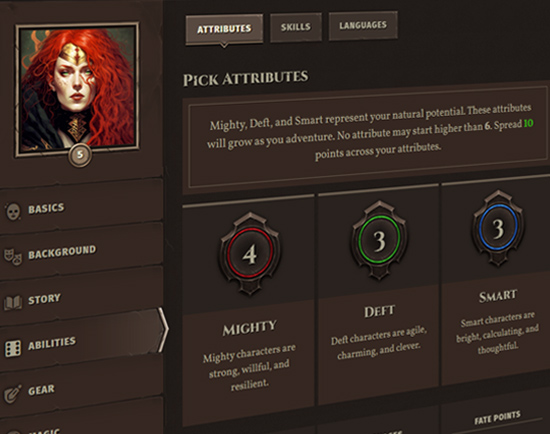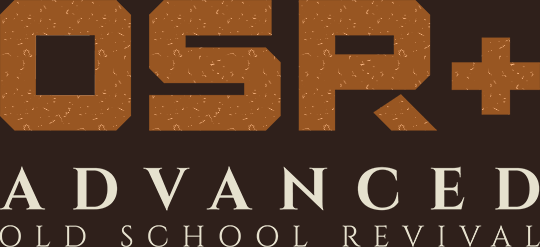Adventure hooks are a type of discovery within a scene that clues players into the existence of other scenes. They are the narrative threads that tie an adventure together. By accumulating adventure hooks from scene to scene, players can plot their own course through the adventure without the GM telling them where to go next.
On the GM's Agenda
Adventure hooks, in many ways, serve the GM's agenda. The GM's agenda is made up of a bunch of intents: if the game is supernatural horror-themed, then the GM's agenda encompasses threatening the societal order the PCs live in by upending natural law (i.e., having them come into contact with ghosts or demons or some other entities from beyond this world) and executing the goals of the adventure's principal antagonist(s).
Since the GM can't predetermine specific outcomes when designing a nonlinear adventure, he communicates the shape of the narrative through adventure hooks.
Example GM Agenda
For example, suppose the principal antagonist is a specter of a mother that is murdering the suitors of her still-living daughter. However, the secret truth is that the specter was herself murdered by the father of one of these suitors, and it was made to seem like an accident. With the mother out of the picture, the suitor's father can obtain the mother's estate by getting his son to marry her daughter. To clue players into this backstory, the GM needs to communicate a host of details:
- That there are serial murders of young men happening;
- That the murders seem supernatural;
- That the victims are all related to the daughter;
- That the accident that killed the mother was anything but an accident;
- and so on, and so forth...
Part of the GM's agenda, then, is getting the players to draw these conclusions about the situation. One way to do that is to have scenes yield these conclusions outright ("all these men are suitors of the daughter"), or point to another scene that will in turn yield the conclusion. Both of these mechanisms of revelation are adventure hooks.
Reverse-Engineering the Adventure
The process of breaking down the "known situation" into a series of conclusions to be drawn is a good way to figure out what your adventure hooks ought to be. A vital conclusion might warrant creating several hooks to reinforce it. Once you have the complete list of conclusions, you can distribute them as hooks across all the scenes you create, and check them off as your PCs discover them.
The Three-Clue Rule
In his article "The Three Clue Rule," Justin Alexander discusses an all-important rule for designing redundancy in mystery scenarios:
For any conclusion you want the PCs to make, include at least three clues.
Justin Alexander, “The Three Clue Rule”
In other words, if you want the players to realize that the mother's death was not an accident, then you need to present them with at least three different pieces of information that suggest as much. By building this sort of redundancy into the adventure, you make the information stand out as important and combat suspicions of coincidence or misinterpretation.
In advertising, this is called "effective frequency," the number of times you have to keep bombarding your customer with the same message before they'll take action. As a basic principle of redundancy, the three-clue rule informs how adventure hooks work. For every scene in the adventure, we establish at least three adventure hooks that point to it, and thus create an interconnectedness between scenes.
Adventure Hooks in Monsters in Merovia
Taking Monsters in Merovia as an example, you'll see that each of the six scenes in the adventure have roughly three adventure hooks pointing to other scenes. The initial doorway scene has the most, since it sets the stage for exploration. In other scenes, adventure hooks yield revelations about the mystery in Glenluce, rather than pointing to other scenes.
Types of Adventure Hooks
Adventure hooks can take any form you can imagine in a scene, so long as they communicate a possible "next thing" to explore in the adventure. Some example forms for adventure hooks include information conveyed by an NPC; a physical object like a personal diary, treasure map, or tapestry on a wall; and circumstantial evidence observed by the PCs in the scene itself.
DIRECTIONAL
Most adventure hooks are directional. The information conveyed by the hook indicates a particular time and/or place to explore. In the tavern scene of Monsters in Merovia, almost all the hooks are directional because the purpose of the scene is to help orient the PCs to the town of Glenluce.
CLue
This type of hook features prominently whenever there is a mystery to solve. Such an adventure hook yields a clue to the mystery, as well as a time and/or place to explore regarding it. For example, at the Docks, the PCs discover that in every order for baking supplies placed with the merchant Karn, there are mortuary supplies mixed in, which suggests further investigation of the Bakery.
Key
Some adventure hooks may serve as keys into scenes that are otherwise inaccessible. This may come in the form of a literal key to bypass a locked area, or special knowledge that reveals the existence of a gated scene.
Story
Story hooks are a rare type which offer the opportunity for PCs to resolve some aspect of their conflict. For example, if the PC has The Secret Heir as their conflict and locates physical evidence of their noble origins in royal crypt, this would count as powerful ammunition in that PC's quest to reclaim their birthright.
campaign
These type of hooks indicate a scene in an adventure outside the web of scenes they're currently exploring. Such a hook does not reinforce awareness of scenes in the current adventure. For example, suppose after an encounter with a bounty hunter, the PCs discover documents indicating they are wanted dead or alive. The document may point to a particular bounty hunter guild in a completely different area of the game world (and perhaps this guild constitutes a scene in an adjacent adventure the GM has ready to go).
 Archetypes
Archetypes Armor
Armor Classes
Classes Conflicts
Conflicts Cultures
Cultures Ethos
Ethos Flaws
Flaws Glossary
Glossary Kits
Kits Maleficence
Maleficence Origins
Origins Shields
Shields Skills
Skills Spells
Spells Stances
Stances Status Effects
Status Effects Tactics
Tactics Talents
Talents Techniques
Techniques Treasure
Treasure Weapons
Weapons











 Hall of Heroes
Hall of Heroes Hall of Legends
Hall of Legends



 Dungeons & Flagons
Dungeons & Flagons